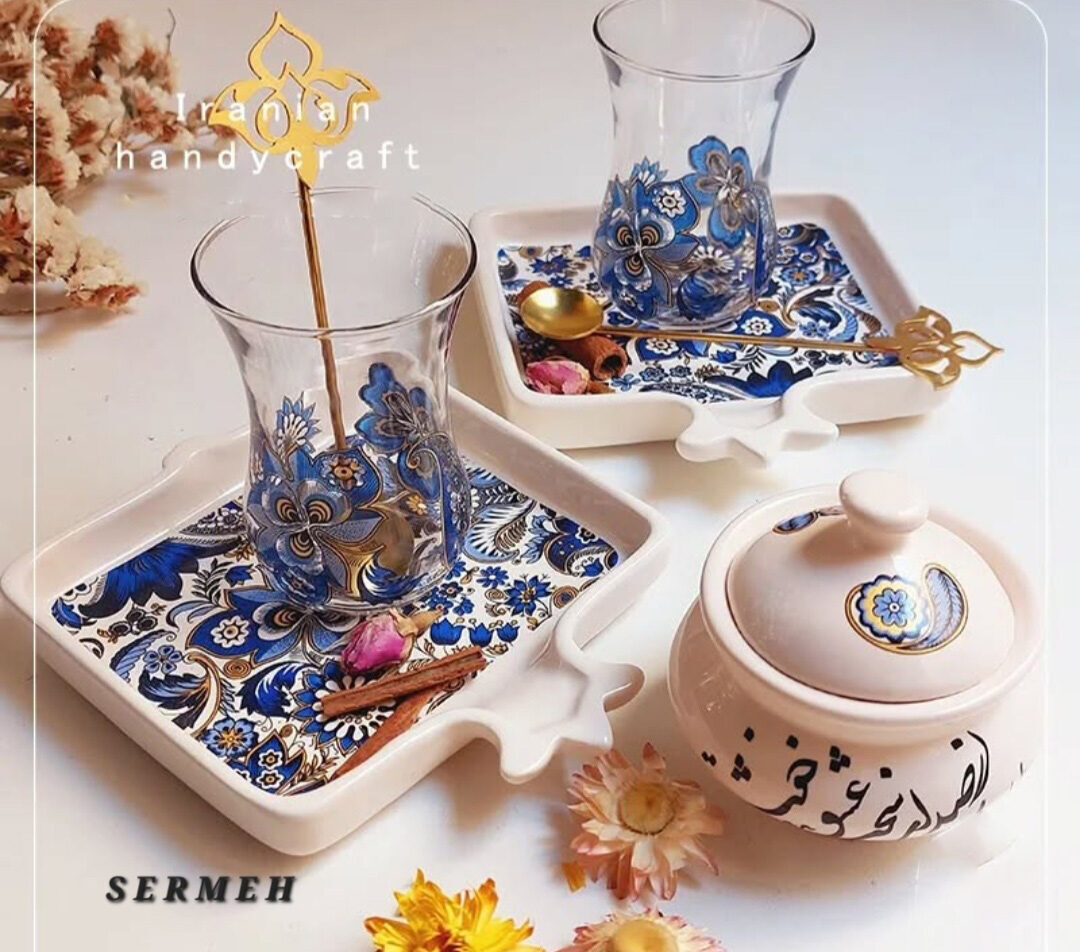Nowruz Haft Sin
The Haft Sin table in Nowruz is one of the most ancient ceremonies of the people of Iran. In addition to Iran, most of the Farsi-speaking neighbours also celebrate Nowruz, and the arrival of the spring season is full of life and freshness for all of them. Nowruz days in Iran are 13 days, each day has its own ceremonies and rituals. It is interesting to know that these days with their special ceremonies are celebrated in some other countries, such as China, in addition to Persian-speaking countries.
*Buy online Persian Haftsin*
The history of setting the Haft Sin table
One of the oldest rituals of Nowruz, which is still performed well, is setting the Haft Sin table. Since ancient times, Iranian people have believed that if they have seven different elements, luck will turn to them. As a result, the number seven has a high value for the people of Iran. Another reason for choosing Haft is related to astrology. Where people believed that by setting the Haft Sin table, they made the seven planets revolve around the Earth.
In the old legends of the Iranian people, it is said that Haft Sin is a sign of the seven heavenly angels. That is, each item of the Haft Sin table is considered a symbol of an angel, each of which has its unique moral characteristics.
There are many narratives and stories about the naming of Haft Sin. Some people also believe that Haft Sin is a symbol of seven different grains that were planted and harvested in Iran during the early days of Islam.
The Haft Sin table from the past to the present
Iranians provide Haft Sin for the number seven Amshaspand or the twelve sacred numbers of the constellations, for the first day of spring, items such as water and green plants symbolizing (light and increase), fire pit symbolizing (sustainability of neuro-warmth), milk symbolizing (rebirth, resurrection, and rebirth), eggs A chicken is a symbol of race and sperm, a mirror is a symbol of transparency and purity, an elder is a symbol of affection, birth, and fertility, an apple is a symbol of the mystery of love, a pomegranate is a symbol of sanctity, a fresh coin is a symbol of blessing and ownership, and a fish is a symbol of the moon. Esfand has passed) Orange is a symbol (Earth sphere) Musk willow flowers, the special flower of Esfand Nomad (Amshaspand Sepandarms), were placed on their table.
Rose water, baked bread made of seven grains, dates, cheese, sugar, branches of the holy pomegranate tree, willow, olives, and figs in bunches of three, seven, or twelve) The Bible were another item used in the Haft Sin table.
Some sources have stated that Iranians had a “seven china” table before Islam, and the Achaemenids used to put food in seven china dishes during Nowruz, which they called “haft chin” or “haft pick.”
In some historical sources, Iranians used to have the Haft Shin table, which was gradually renamed. The components of the Haft Shin table were candles, wine, sweets, nectar (honey), boxwood, syrup, and anemones or plant branches.
During the Sassanid period, Haft Shin became a common custom of the Iranian people, and Shamshad was placed on the table along with the rest of the Nowruz Shins as a sign of greenness and immortality.
In some villages, the custom of seven trays has been established, they put different foods in the seven trays. Haft Siny has become Haft Sin later by removing (yay).
*Buy online Persian Haftsin*
Components of Haft Sin set
The Holy Quran
The first thing that Iranians put on the table when setting the Haft Sin table is the Holy Quran. With the coming of Islam to Iran and the conversion of Iranians and their conversion to Islam, they put the Quran on their Haft Sin table to start the new year with trust and appeal to God Almighty.
green plant
Green is one of the components of the Haft Sin table, which makes hearts happy with its colour and freshness. Iranians plant wheat or lentils before the new year, and in the last days of the year, some prepare greens from outside.
In ancient Iran, 25 days before Nowruz, 12 columns of raw clay were erected in the palace of the king, and a type of grain was planted on each. If the greens grow well, they have a blessed year ahead. Green is a symbol of freshness and greenness and indicates human life and its connection with nature.
Apple
Apple is a symbol of health and beauty that Iranians put on the table to maintain the health of their family members.
Samanoo
Semno is prepared from freshly ripened sprouts of wheat and is a symbol of the birth and fertility of plants and the abundance of food and good and powerful foods.
Oleaster
Sanjad is another part of Nowruz’s brotherhood; the fragrance of its leaves and blossoms is a stimulus of love and affection and a symbol of fertility, love, and affection.
garlic
Garlic is another component of the Haft Sin table, which is a symbol of disinfection and cleanliness of the environment and health of the body, as well as removing sore eyes. For this reason, Zoroastrians put garlic on the Haft Sin table, because they believed that the smell of garlic escapes the court. They peel the garlic and then put it on the table.
Vinegar
Like garlic, vinegar was placed on the table to clean the environment, remove pollution, and invalidate magic.
sumac
Sumac is one of the components of the Haft Sin table and is a symbol of love, affection, and the connection of hearts.



























